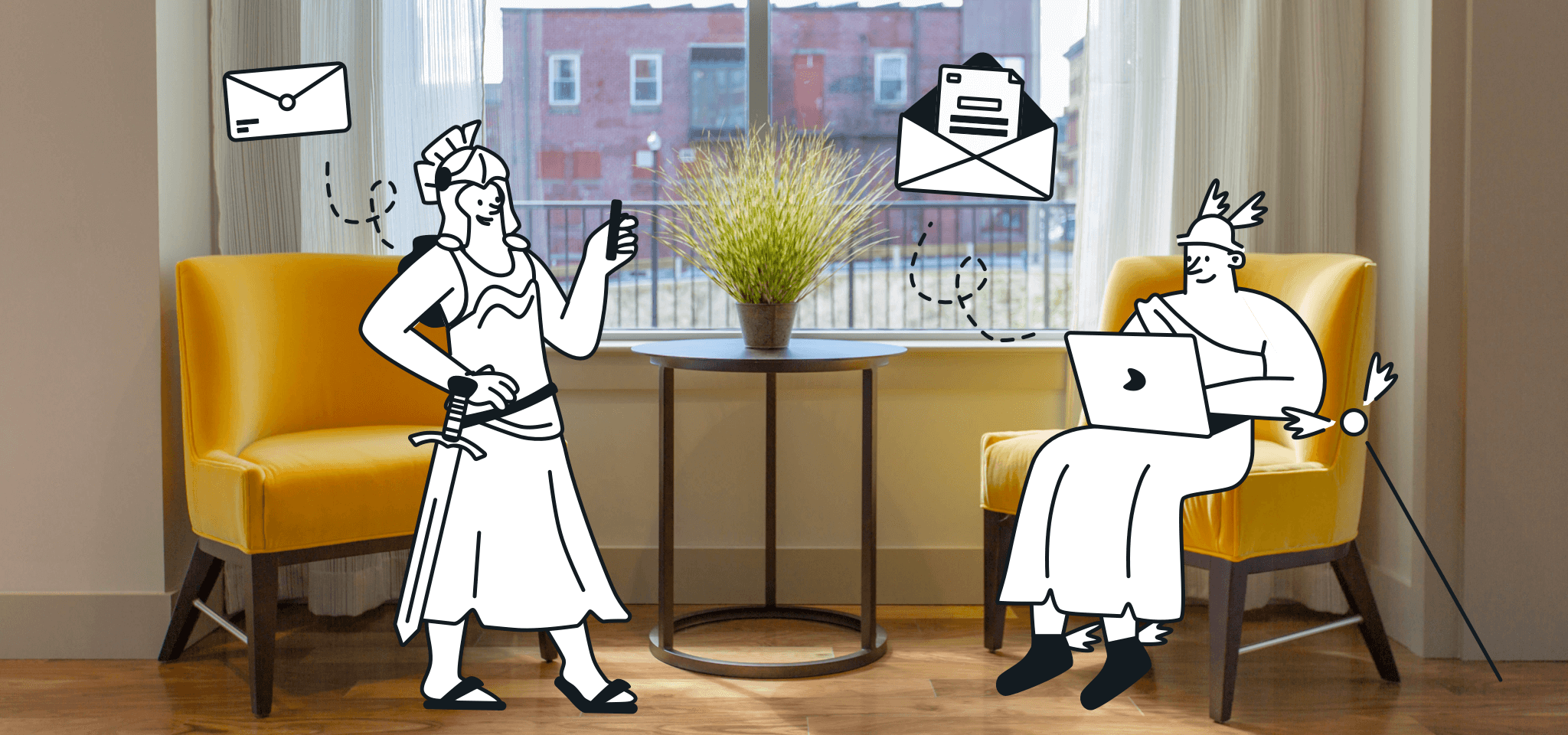Email Best Practices
Lessons from nonprofits: How to use email to drive revenue
We collected some of our favorite nonprofit marketing techniques and looked at how they applied to other industries and organizations.

PUBLISHED ON
Everyone these days needs to be able to leverage email as an easy, low-cost way to market to the largest possible audience.
Email is advantageous because it allows businesses to distribute their content anywhere, regardless of location, and especially for organizations that reply on print materials can erases printing and mailing costs. The only limit to email marketing is your imagination.
One industry that relies heavily on a clear communication strategy is nonprofits and charities who rely on engagement and donations for their survival? We thought it would be helpful to learn from nonprofits to help improve your own campaigns engagement.
The four most important emails in the nonprofit sector are event invitations, newsletters, donation campaigns, and thank-you emails.
We at Donately, a platform for online donations, collected some of our favorite nonprofit marketing techniques and looked at how they applied to other industries and organizations. Here are our top 5:
Table of content
1. Remember the end goal of your email marketing campaign
A nonprofit’s end goal for almost any email campaign is to convince a supporter to give a contribution, attend an event, or support a cause. To accomplish this end goal, just like any for-profit business, first requires getting your audience to click through to your website.
The click-through rate is the percentage of readers who click a link included in the email out of all the readers who open the email. A business wants their emails to increase the click-through rate to their website, to drive traffic and potential customers.
So how do nonprofits increase the click-through rates to their donation pages? Here are some strategies for maximizing your CTR:
Mobile-optimize everything
Decrease the length of your copy: there’s a correlation between copy length and CTR
Add a sense of urgency to your links
Mobile-optimizing everything is a best practice for any business that has an online presence: if your website is illegible or dysfunctional on a mobile device or tablet, you stand to lose a lot of traffic.
Decreasing the length of your copy makes your emails more attractive: no one wants to slog through an endless scroll of plain text to get to the point.
Adding a sense of urgency to your links, like adding a countdown or deadline-related words to your call-to-action buttons can also increase click-through rates.

2. Build your readership effectively
Something that nonprofits excel at that other businesses could definitely learn from is their ability to build an email list. Nonprofits have to be capable network-growers, because they rely so heavily on their social networks for building awareness and ongoing financial support.
The most important thing to keep in mind is that your emails will be most effective when they are targeted at people who actually want to be receiving them. Nothing will send your email to the trash bin (or worse, the spam folder) quicker than sending someone a newsletter without their consent.
So how do nonprofits grow their lists?
They add ways to opt in all over their website.
They include opportunities to sign up on their social media.
They pass around sign-up sheets at events.
Then, once you’ve successfully added a fair number of people to your email list, segment those emails in order to target your marketing campaigns more effectively.
If you’ve never segmented an email list, never fear: it just means splitting up your larger list of subscribers into smaller lists based on commonalities. These splits could be based on their preferred method of communication, their age range, or their marital status.
Anything that allows you to better tailor your marketing strategies to your audience is a good strategy. Nonprofits use donor database software to measure how their donors engage with their nonprofit, but your business probably uses a different CRM.
See what data that software contains! You never know what information you might find.

3. Optimize your subject lines
Everyone is familiar with the importance of making good first impressions, but this is especially important with your email marketing campaign.
Your subject line is the only chance you get to pique someone’s interest. If they’re not engaged by your subject line, they won’t open your email and it won’t matter how well-designed your email was.
No matter if you’re a nonprofit or a for-profit business, you need to keep a few things in mind while you’re crafting the perfect subject line:
Avoid words that trigger a spam alarm (�“free”, “opportunity”, “you’re a winner”).
Engage your readers FOMO - ‘fear of missing out’.
Write the subject so that the entire line is readable in an any inbox (mobile, desktop, Gmail, Outlook, etc.)
Don’t make your reader commit to doing anything in the subject.
The last one, about making your readers do things for you, may seem strange at first. If you want your readers to do something for you, shouldn’t you be upfront about it?
You should, but only in the body of your email. If your email’s subject line declares that, “YOU (READER) MUST STOP HUMAN TRAFFICKING”, your reader is going to be put off by the demand. In fact, write your subjects like you would write to friends. Conversation, lower cased, subject lines have increased open rates by up to 5x.
Instead, think of ways to intrigue your readers. What about your business will interest them? What can your business do for them that they want to know about?
Don’t forget to make your email start with a bang as well — some email providers like Mailjet offer pre-header text, which is the first line or two of an email. If your reader is already bored after the pre-header text, they’re not going to read the email.

4. Convince people to read your emails
So your subject line and preheader text has convinced your readership to open your email. But now what?
You need to make them want to read what your email has to say. So how can you make your email attractive enough at first glance to engage your readers?
First, your email should tell a cohesive story. Instead of just providing a broad overview of whatever your business does, tell a specific story to engage your readers.
Humans are hardwired to be drawn in by storytelling, so use that to your advantage while writing your copy.
Nonprofits are the undefeated heavyweight champions of using stories and personal testimonies for advertising. Just think of the St. Jude’s marketing campaigns.
Nonprofits use personal testimonies for every type of marketing from email to peer-to-peer fundraising pages, so take a page from their book and provide some personal stories to add a human interest element to your emails.
To make your emails more visually attractive, after you’ve decided on what story you want to tell, include some of the following:
Short paragraphs
Bulleted lists
High-quality images of people involved with your business
Embedded videos of your business at work
Using rich media in your email marketing is a foolproof way to make your copy more engaging.

5. Keep your ask until the end
Nonprofits, due to the nature of their business model, are the best at making asks, no matter what the ask is.
While your for-profit business wouldn’t be asking for donations, you do still want your email marketing campaign to inspire your readers to complete an action.
So how do nonprofits do it?
They only ask once
They ask for more than money
They use an attractive Call-to-Action
First, no one wants to be repeatedly badgered for something, especially not in the same email. Save your big ask for the end, after your reader has been thoroughly entranced by your gorgeous photos and cohesive storytelling.
Second, nonprofits excel at giving their supporters options, so take a page from their book.
One of these options is encouraging their supporters to leverage their employer’s corporate philanthropy policies to help the nonprofit, and then distributing a list of volunteer grant companies.
Offer your readers other ways to support your business, like distributing a coupon to their friends through shares on social media or by using your preferred hashtag.
Make sure your call-to-action links and buttons are attractive and branded to your business.
Finally, consider whether or not any of your other software products are able to be integrated into your emails, like your online storefront or a sign-up page.
Nonprofits are pros at using easily embeddable software, and some of it overlaps with for-profit software! Check out this list of third-party integrations from Donately to see if any of your software products are compatible with theirs.
Nonprofits and for-profit businesses aren’t so different, after all. Both business models can benefit from email marketing best practices to increase reader engagement.
Once you’ve integrated these tips and tricks into your email marketing strategy, don’t forget to track key metrics and adapt your techniques accordingly. With some tweaks and by listening to your readership, you’re sure to turn your email subscribers into paying customers.
***
This post was written by Andrew Berry, Head of Marketing and Customer Success at Donately.








